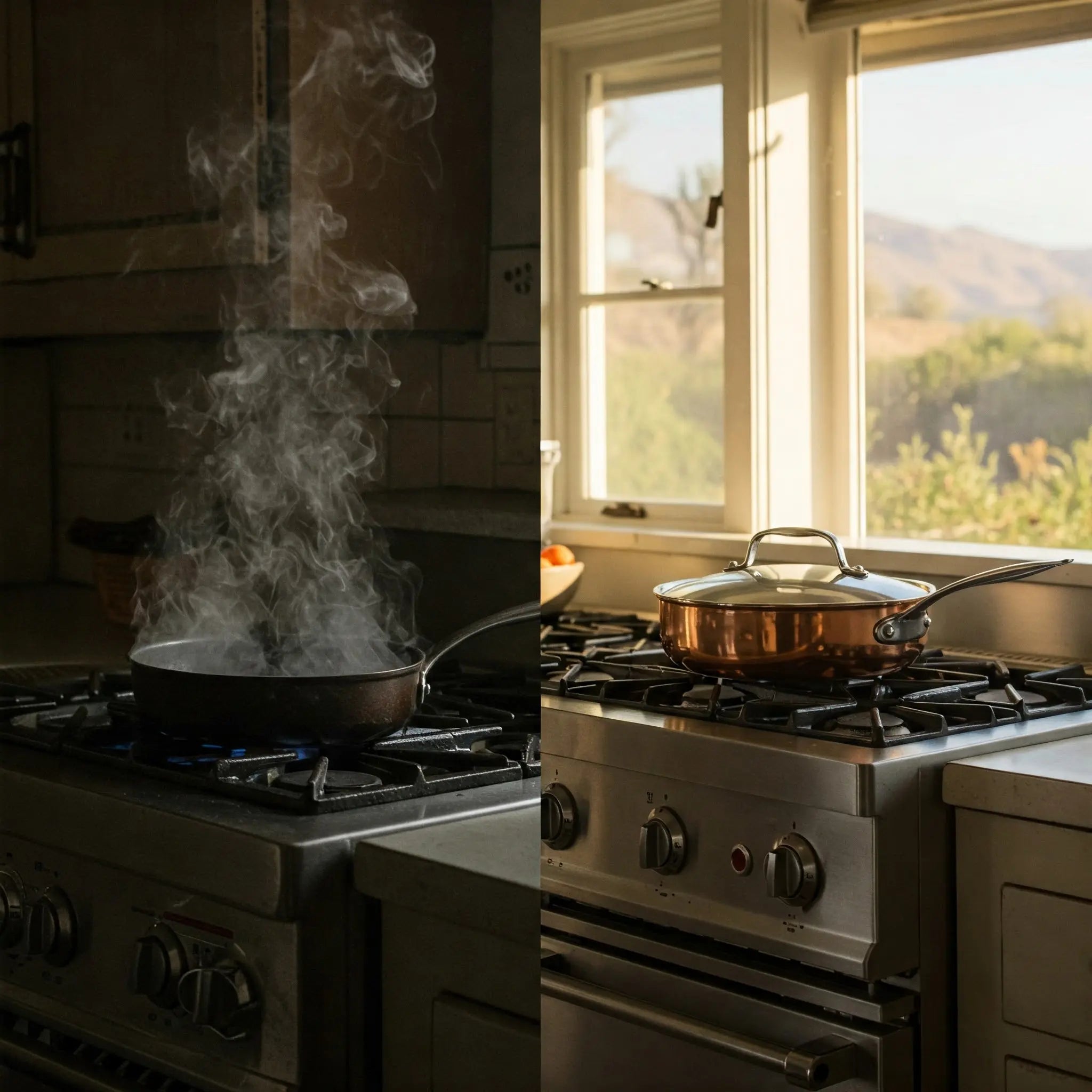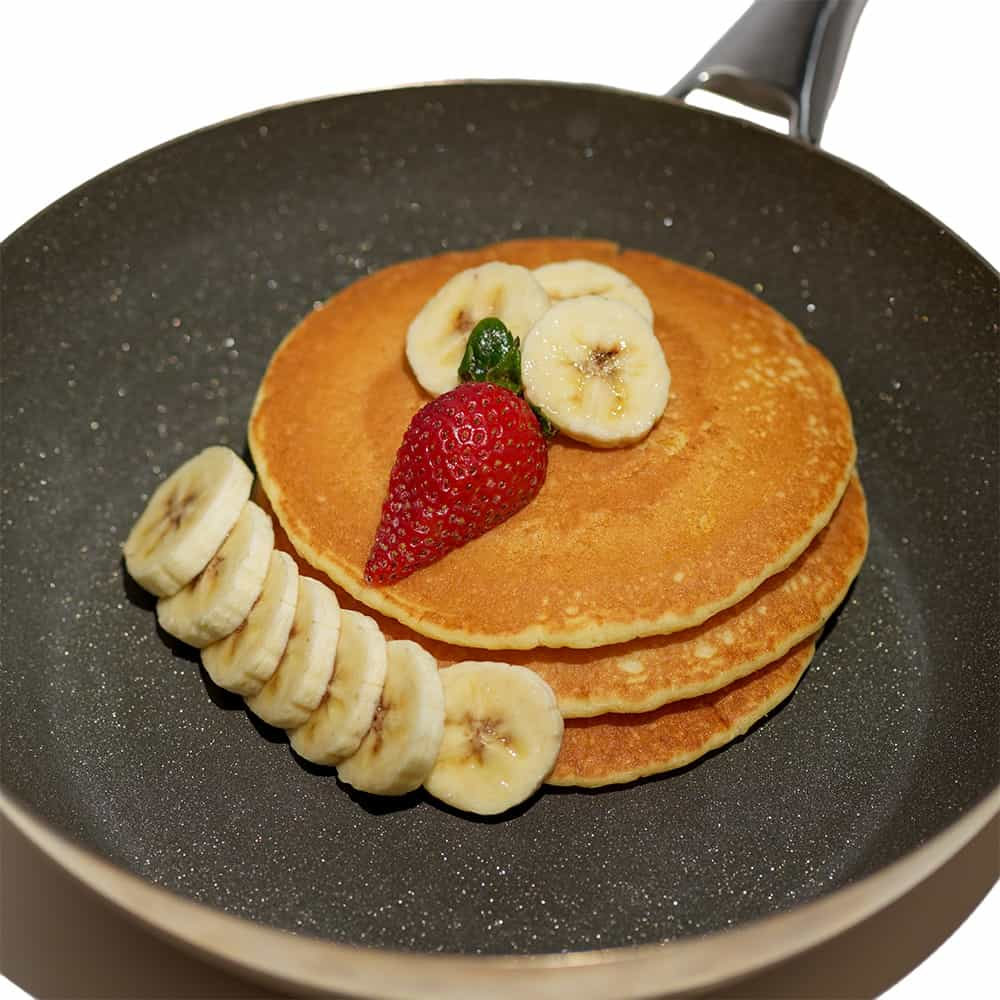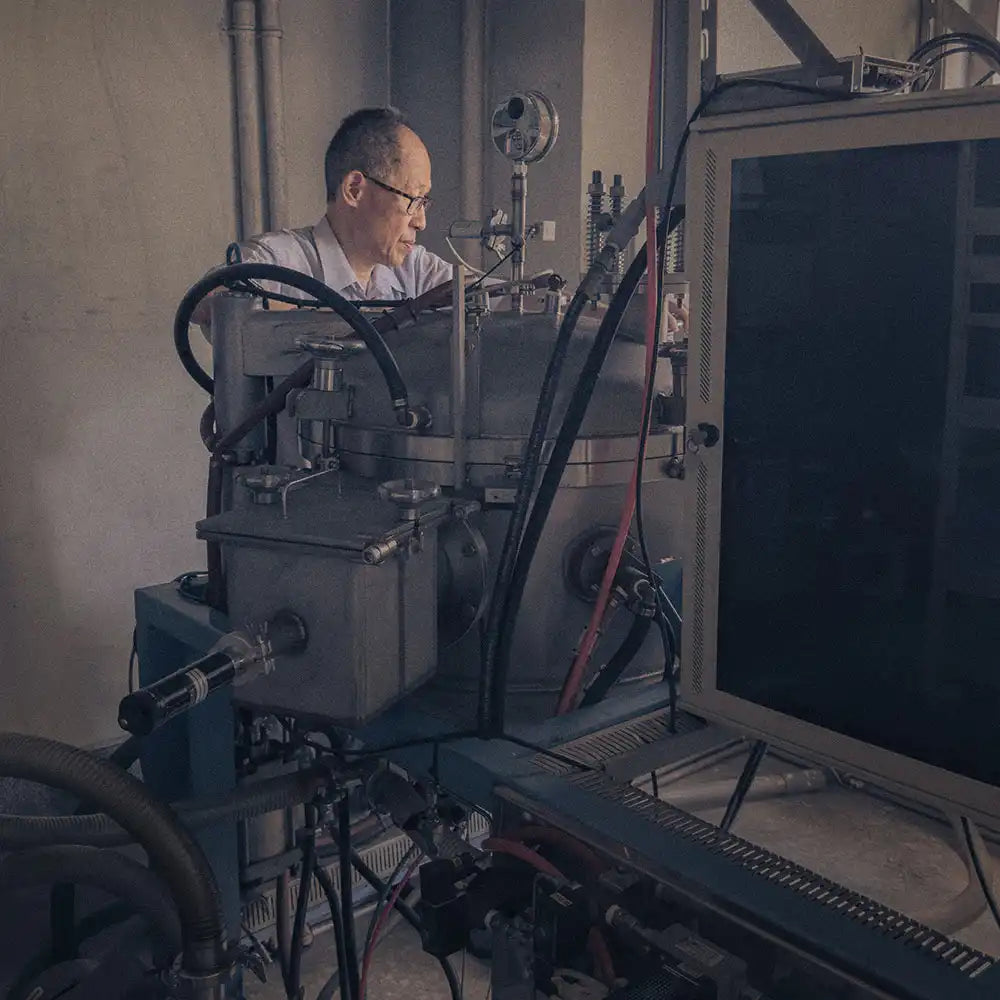
Why California Hasn’t Banned PFAS in Cookware (Yet) and the Rise of Diamond Cookware
California’s Surprising Regulatory Gap
California is renowned for bold environmental moves—think electric car mandates, plastic bag bans, and strict limits on toxic substances in consumer goods. Yet when it comes to per- and polyfluoroalkyl substances (PFAS) in cookware, there’s a surprising gap. While the state has instituted bans on PFAS in cosmetics, textiles, and more, it’s only required labeling for non-stick pots and pans. Meanwhile, other states like Colorado, Minnesota, and even Maine are inching toward comprehensive PFAS bans in cookware. So how did this happen, and what can health-conscious Californians do?
Keep reading to learn about California’s unexpected approach to PFAS in cookware, why these so-called “forever chemicals” are raising alarms, and how advanced solutions like vacuum brazed diamond pans are becoming a top-tier choice for safe, high-performance cooking.
Understanding PFAS and Their Risks
PFAS (per- and polyfluoroalkyl substances) are synthetic chemicals prized for their stain-, water-, and heat-resistance. You’ll find them in non-stick pans (often associated with Teflon), food packaging, firefighting foam, and more. Unfortunately, those same qualities also make PFAS extremely persistent—they don’t break down easily in our environment or in our bodies.
Potential Health Impacts
-
Cancer Risks: Research suggests that exposure to certain PFAS is associated with an increased risk of kidney, testicular, and possibly prostate cancers.
- Hormone Disruption: Studies indicate that some PFAS may interfere with the body’s natural hormones.
-
Child Development Concerns: Associations have been observed between PFAS exposure and developmental issues in children, including lower birth weight, accelerated puberty, and potential behavioral changes.
-
Immune System Impacts: There is evidence that PFAS exposure may reduce the antibody response to vaccines and potentially weaken the immune system.
California vs. Other States: A Quick Comparison
While California has made bold strides banning PFAS in a range of products, cookware remains in a peculiar space: only labeling is required, not a complete ban. Other states, however, have decided to crack down more aggressively. Below is a snapshot of differing regulations:
| State | Regulation & Timeline |
|---|---|
| California |
|
| Minnesota | 2025: Banned sale of products with intentionally added PFAS (including cookware). |
| Colorado |
|
| Connecticut, Maine, Vermont |
|
| Rhode Island | 2027: Ban on cookware containing intentionally added PFAS. |
Key Takeaway: In states like Minnesota and Colorado, PFAS bans in cookware will soon be in full swing. California’s approach, by contrast, emphasizes transparency (labeling) over prohibition. While better than nothing, labeling alone doesn’t eliminate the risk of exposure for consumers using older or PFAS-laden cookware.
Clarification: Current PFAS-Free Cookware Options
For now, many Californians are navigating these regulations by proactively seeking out PFAS-free cookware. Popular choices include:
- Cast Iron: Beloved for durability and heat retention, but some find it heavy and cumbersome.
- Stainless Steel: Typically safe, though not naturally non-stick and can have hot spots if not well-made.
- Ceramic-Coated Pans: Marketed as PFAS-free, but these coatings may degrade over time, affecting performance.
-
Vacuum Brazed Diamond Cookware: A rising star that combines eco-friendliness with exceptional durability and high-performance cooking (more on this below).

Additionally, current labeling laws in California provide some transparency: as of 2023, manufacturers must disclose PFAS intentionally used in cookware on their websites, and by 2024, these disclosures must appear directly on product labels. While this helps consumers make informed choices, it doesn’t prevent PFAS from appearing on store shelves.
Opportunity: Enter Vacuum Brazed Diamond Cookware
The quest for a truly long-lasting, PFAS-free cooking surface has turned attention toward vacuum brazed diamond cookware. Unlike “diamond‑infused” ceramic coatings that rely on chemical binders, vacuum brazed pans fuse real diamond crystals directly onto the metal substrate in a high‑temperature, vacuum‑sealed process—no “forever chemicals” required.
Why Vacuum Brazed Diamond?
- Exceptional Durability: Diamonds are the hardest natural material on Earth. This means minimal wear and tear, fewer scratches, and a naturally resilient cooking surface.
- Superior Heat Transfer: Diamonds conduct heat extremely well, ensuring even distribution and fewer hot spots.
- Truly PFAS‑Free: Because it uses physical bonding rather than chemical coatings, there’s no need for potentially toxic compounds like PTFE (Teflon).
- Performance for Serious Home Chefs: These pans typically distribute heat more evenly than traditional non‑stick pans, making them versatile for a wide range of tasks, from searing steaks to simmering sauces.
Making the Switch
If you’re keen to invest in cookware that’s both safe and long‑lasting, vacuum brazed diamond pans check all the boxes. They may come at a higher price point than standard non‑stick options, but the longevity and peace of mind often outweigh the initial cost. And given the evolving regulations—plus growing consumer awareness—it’s likely that advanced, PFAS‑free cookware is the future of home cooking.
Frequently Asked Questions (FAQ)
Q: Are all PFAS equally harmful?
A: PFAS is a large family of chemicals. While some are better‑studied (like PFOA and PFOS), there’s concern that replacing one PFAS compound with another may lead to “regrettable substitutions.” In other words, the entire PFAS class tends to be problematic.
Q: Isn’t Teflon now PFOA‑free?
A: Many manufacturers tout “PFOA‑free” on their labels, but that often means they’re using other PFAS substances. California law now mandates clearer labeling to avoid confusion.
Q: I have a Teflon pan at home. Should I throw it out?
A: If it’s scratched or showing signs of wear, it’s generally safer to replace it. Scratched coatings can leach chemicals into your food. When in doubt, err on the side of caution.
Q: What’s the difference between ceramic non‑stick and diamond cookware?
A: Ceramic non‑stick coatings are typically a blend of ceramic materials that can wear down over time. Vacuum brazed diamond cookware physically bonds diamond crystals to the metal surface, making it exceptionally durable and free from chemical binders.
Q: Will California eventually ban PFAS in cookware?
A: Many experts suspect a future ban is likely, especially given that other states are already rolling out stricter measures. For now, labeling requirements are in place, but stay tuned for legislative updates.
Final Thoughts & Next Steps
California may have pioneered some of the strictest PFAS regulations in the country, but the absence of a full cookware ban still puzzles many advocates and everyday consumers. While legislators debate the next steps, you don’t have to wait for an official mandate to protect your family. By staying informed about what’s in your pans—and opting for safer, more durable options like vacuum brazed diamond cookware—you can enjoy peace of mind without sacrificing performance.
Ready to upgrade your kitchen and avoid the PFAS dilemma?
Consider investing in vacuum brazed diamond cookware—a cutting‑edge, PFAS‑free solution that merges eco‑conscious design with professional‑grade performance.
References
- California PFAS Timeline - California Water Boards
- PFAS in Drinking Water - California Water Boards
- National Institutes of Health: PFAS
- How PFAS Impacts Your Health - CDC
- Our Current Understanding of the Human Health and Environmental Risks of PFAS - EPA
- California to Enforce PFAS Prohibitions in Specific Products - SGS
- Ditch the Teflon: The Dangers of PFAS Exposure from Cookware
- Ending Forever Chemicals Act: California SB 903 - Breast Cancer Prevention Partners
- New California PFAS Regulations Coming in 2023 and 2025 - Orange County Coastkeeper
- PFAS in Cookware: State-by-State Regulations | BCLP
- California governor signs bill phasing out PFAS “forever chemicals” in clothing and other textiles - Toxic-Free Future
- Diamond Non-stick Surface and Cooking Utensils - USPTO Patent Center
- What Is Diamond Coating on Pans & Is It Safe? - diamondPans
- Is Diamond Coating on Pans Safe? A Quick Answer + What You Need to Know
- Is Diamond Coating the Same as Teflon? The Truth About Nonstick Pans
- Diamond Cookware: What It’s Made Of & Is It Safe?
- Why Use Diamond on Cookware & Is It Good? | Ultimate Guide
- Diamond vs. Ceramic: Which Frying Pan Coating Is Better?
- What’s the Safest Cookware? Unveiling Diamond-Infused vs. Teflon
- Why Diamonds Are Naturally Nonstick? - diamondPans
- How to Choose Diamond Cookware: Carat Weight Matters Most - diamondPans
- What are PFAS and Why Should People Choose PFAS-Free Cookware? - diamondPans
- PFAS-Free Diamond Cookware: The Comprehensive Nonstick Guide for American Home Cooks - diamondPans
- Minnesota’s PFAS Ban: Safer Kitchen Solutions - diamondPans
- Colorado’s 2026 PFAS Ban: Impact on Cookware & Safe Alternatives - diamondPans
- Connecticut PFAS Ban: What It Means for Your Cookware - diamondPans
- Maine’s PFAS Ban: How to Choose Safer Cookware Before 2026 - diamondPans


